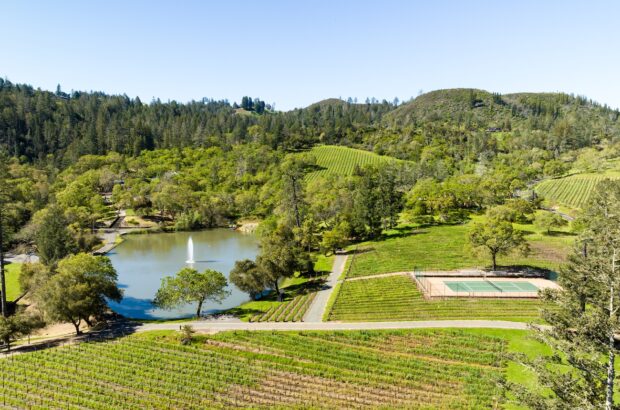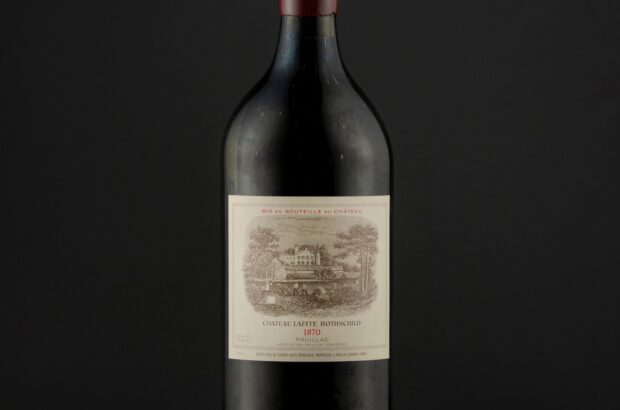Think ‘Scotland’ and most spirits lovers will think ‘Scotch’. No doubt, the country is well known for its whisky production, with a proud tradition that dates back to the 15th century.
But thanks to this whisky heritage and an abundance of native botanicals, Scotland’s gin scene is also currently thriving. In part, this is due to a UK-wide boom in craft gin distilling, kicked off by a change in legislation in 2008. Before this the 1751 Gin Act was still in place, prohibiting the production of small batches of gin in pot stills.
When the act was repealed it paved the way for a host of new micro-distilleries to pop up. Of course Scotland had a natural advantage in the distilling game, but there was added financial incentive to produce gin.
Unlike whisky, which sits in a barrel room maturing for years, gin can be sold as soon as it’s distilled. Meaning a flow of ready cash for Scotch distillers wanting to expand their operation. Not to mention young distillers wanting to launch their own whiskies.

Dynamic gin scene
Fast-forward to 2022 and Scotland’s gin scene is both dynamic and varied. Big brands such as Hendrick’s and The Botanist have set the bar for international success. While a host of boutique producers add interest and creativity.
‘I think there are a few special factors which are driving Scottish gin forward,’ says Nick Ravenhall, MD of Holyrood Distillery in Edinburgh, which makes Height of Arrows gin. ‘Firstly we have an incredible base line to start from. The gins from Scotland are being created by a community of spirit makers who have grown and learned their business in the footsteps of Scotch whisky.’
This expertise applies not just to the quality of the spirit in the bottle, but to branding and packaging. In other words, making a gin that tastes good, looks good and has a compelling story to tell. ‘You only have to look at Harris, Lind & Lime and Electric Spirit Co for quality liquid, that has been put together with a clear story that resonates, bound with incredible packaging,’ explains Ravenhall. ‘Scotch has taught us that and it’s a great place to start from.’
Equally as important as the lessons learned from the whisky industry is the willingness of Scotland’s distillers to work together. ‘It’s a small community in a small country and I think in that environment we drive each other to push harder to be better – whether it’s liquid quality or brand thinking, you don’t see Scottish gins sitting still,’ says Ravenswood.
‘The other element of our community is that despite competition there is also cooperation between gin makers. Knowledge is shared and when someone needs help with something it’s always given. I think that lovely mix of competition and cooperation puts a dynamic energy into the way we are all approaching the category.’

Uniquely Scottish
Scotland’s other USP is its landscape and wide variety of native plants. ‘Scotland is rich in natural resources,’ explains Claire Murray, co-founder of Dunnet Bay Distillers, the most northerly mainland distillery in Scotland. ‘The water and the botanicals lend themselves to a particular genre of gins that use familiar ingredients in an enticing way.’
Dunnet Bay uses sustainably foraged Rhodiola rosea, known as ‘rose of the rock’ as the hero botanical in its Rock Rose Gins range. ‘We combine this with other coastal plants and botanicals that grow wild nearby, along with botanicals grown in the distillery’s own garden, so our gin is truly a Scottish gin,’ says Murray.
‘Our ability to be so brave with natural resources and ingredients is what I believe makes Scottish gin stand out so much in the market,’ adds Kirsten Blackburn of The Borders Distillery in Hawick, in the Scottish Borders. ‘This doesn’t mean covering the spirit in frills, but it’s more about running with natural qualities and botanicals that are native to our land.’
The Borders Distillery gins are made from a base of barley spirit; the barley is farmed within 48km of the distillery. ‘This means our gin holds a mouthful of character and flavour that has a direct link to the land it is made from,’ says Blackburn. ‘We also keep community and sustainability at the core of our product, so when we say it’s locally grown, made by local people and committed to local produce, we mean it.’
Aiming high
With such passion behind the products, it’s little surprise that Scottish gin is going from strength to strength. First celebrated on 3rd August 2019, International Scottish Gin Day was established in 2018 by The Gin Cooperative, which promotes the country’s gins.
It’s clear that Scotland’s distillers are aiming to make their gins as well known as their whiskies in the global spirits scene. They may have some catching up to do, but they’re on the right path. As Ravenhall puts it: ‘We have stepped out from behind Scotch whisky and brought a fresh perspective to stories that are anchored in Scottish provenance.’
So if you’d like a taste of Scotland’s lighter side, here are some distinctive gins to add to your drinks cabinet…
Best Scottish gins to try
Caorunn
Made at Balmenach Distillery in the whisky heartland of Speyside, Caorunn (pronounced ‘ka-roon’) takes its name from the Gaelic word for rowan berry. That’s one of the five Celtic botanicals used by the distillery – along with heather, coul blush apple, bog myrtle and dandelion – plus six traditional gin botanicals. Very creamy on the palate, with vanilla notes that balance spicy notes of liquorice, black pepper and green chilli, plus a pleasing herbal bitterness to the finish. If you favour a fruitier gin, try Caorunn Scottish Raspberry. Alc 41.8%
Eight Lands Organic Speyside Gin
Glenrinnes Distillery is located at the foot of Ben Rinnes mountain; the name Eight Lands comes from the eight counties that can be seen from the top of the mountain on a clear day. The distillery is part of a family-run estate, where cattle, sheep and deer are raised organically. This is a classic London Dry, distilled using 11 botanicals including cowberries and sorrel. Packed with fresh piney notes, plus sweet red berries, lots of fresh lemon citrus and a spicy finish, with distinct notes of black tea. Makes a mean Martini. Alc 46%
Height of Arrows
This beautifully rounded Martini gin is made by Holyrood Distillery in Edinburgh. Inspired by the simplicity of whisky production, juniper is the focus here. Isle of Skye sea salt is added after distillation to amplify the flavour, along with natural beeswax for texture. Very creamy and smooth, with distinctively bright juniper aromas, it makes a superlative Gibson Martini. Alc 43%
Hendrick’s Gin
In the 20-odd years since it was launched, Hendrick’s has become a modern classic. Not bad for a gin that hails from the tiny seaside village of Girvan in Ayrshire, southwest Scotland. Cucumber and rose petal are the signature botanicals here, but this gin isn’t lacking in classic London Dry juniper punch. Makes a great summer garden party G&T garnished with cucumber slices. Alc 41.4%
Kerr’s Navy Strength
William Kerr, born in Hawick in 1779, was one of the most accomplished plant hunters of the 19th century, so it’s fitting that he lends his name to this range of gins from The Borders Distillery. Made from malted Scottish Borders barley, grown near Hawick in partnership with local farmers, there’s a creamy maltiness to the palate balanced by piney juniper. With its spicy profile and navy strength abv, this packs a punch, but makes a killer G&T. Alc 57.1%
Lind & Lime Gin
Made at the Coburg Street Stillhouse in Edinburgh’s historic distilling district of Leith, this gin comes in a beautiful bottle – but it’s more than a pretty face. The name celebrates the work of Edinburgh doctor James Lind, who in the 18th century discovered that citrus fruit helps to prevent scurvy. No surprises that lime is one of the key botanicals, along with pink peppercorns. The result is a London Dry style that’s perfect for G&Ts, with citrus freshness and distinctive spiciness. Alc 40%
Rock Rose Original Edition
Made by Claire and Martin Murray of Dunnet Bay Distillers in Caithness, this gin features Rhodiola rosea (rock rose) foraged from the cliffs of Pentland Firth. Esteemed by the vikings for its strength-giving properties, rock rose lends a floral character to the nose and palate. Lovely vanilla creaminess is balanced by peachy fruit, fresh herbaceousness and plenty of juniper character. The ceramic bottle looks great too. Alc 41.5%
The Botanist
Produced by Bruichladdich distillery, on the Hebridean island of Islay, The Botanist is made with a whopping 31 botanicals – the embossed bottle shows their Latin names. No less than 22 of them are foraged on Islay, including bog myrtle, gorse flowers and meadowsweet. The varied botanical mix means that no one flavour dominates. A beautifully rounded, honeyed, heathery meadow-grass palate is balanced by citrus freshness. Alc 46%
Theodore Pictish Gin
Inspired by the Picts, a tribe thought to be some of the earliest settlers in Scotland, this is a complex gin. It’s distilled with 16 botanicals, including damask rose, pomelo, bourbon vetiver, honey, kaffir lime, chamomile, cardamom and oolong tea, which lends a creamy gold tint to the colour. Floral notes and citrus freshness on the nose, with more florals on the palate – especially lavender – mingling with ginger spice and a lifted herbal character. Lingering honeyed sweetness balanced by pink pepper and dried ginger spice on the finish. Savour it in a distinctive Martini. Alc 43%
Tobermory Isle of Mull Hebridean Mountain Gin
The historic Tobermory Distillery can be found on the Isle of Mull, one of the Hebridean islands off Scotland’s west coast. Founded in the 1790s, the distillery was mothballed in the 1930s but reopened in 1993. Today it produces Tobermory and Ledaig single malts as well as this fresh island gin. Botanicals include rowan berry, rosehip and wild heather, giving pretty floral aromas, underpinned by plenty of clean piney juniper. With green chilli spice notes and a long crisp ozone-fresh finish. Alc 43.3%







